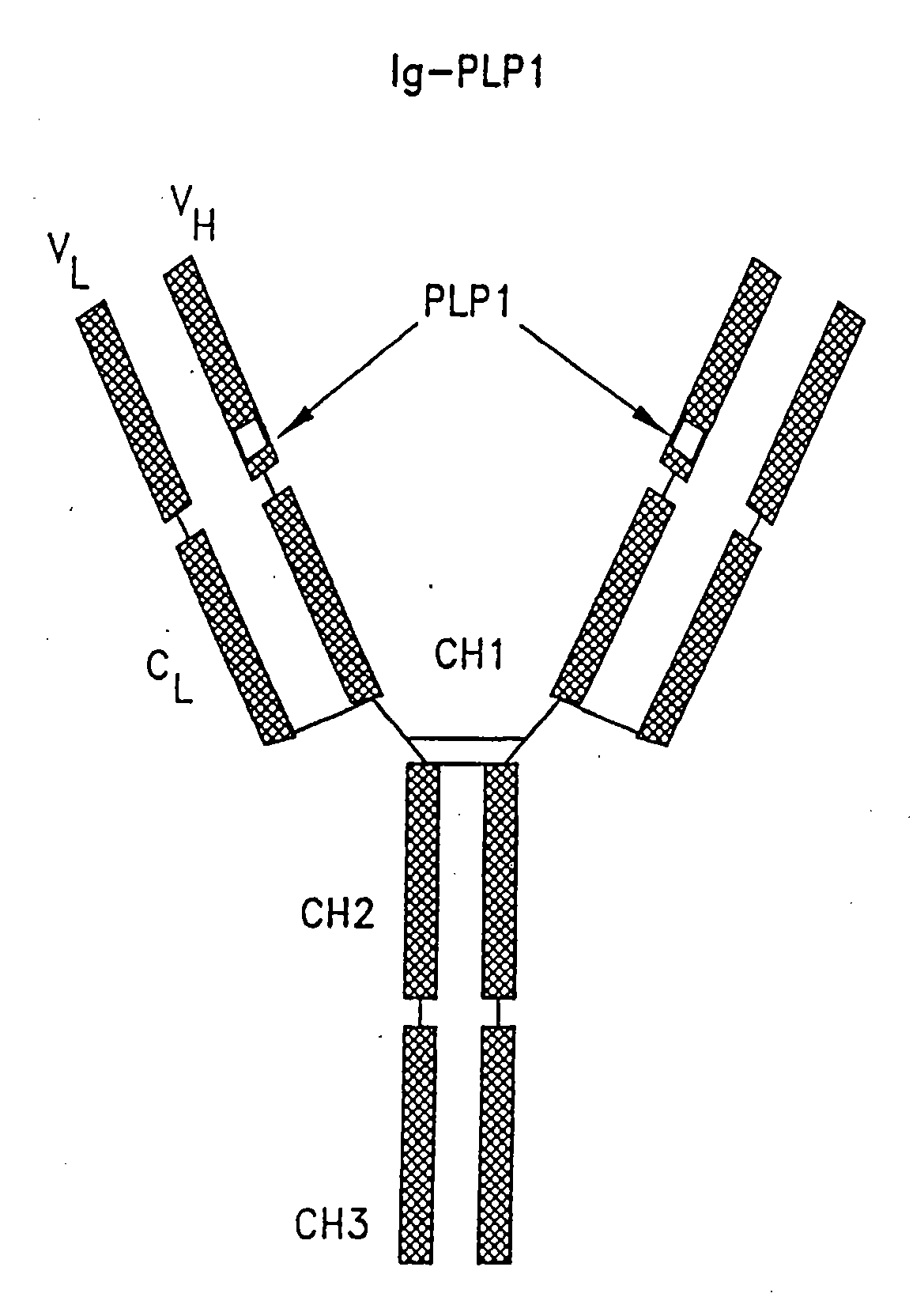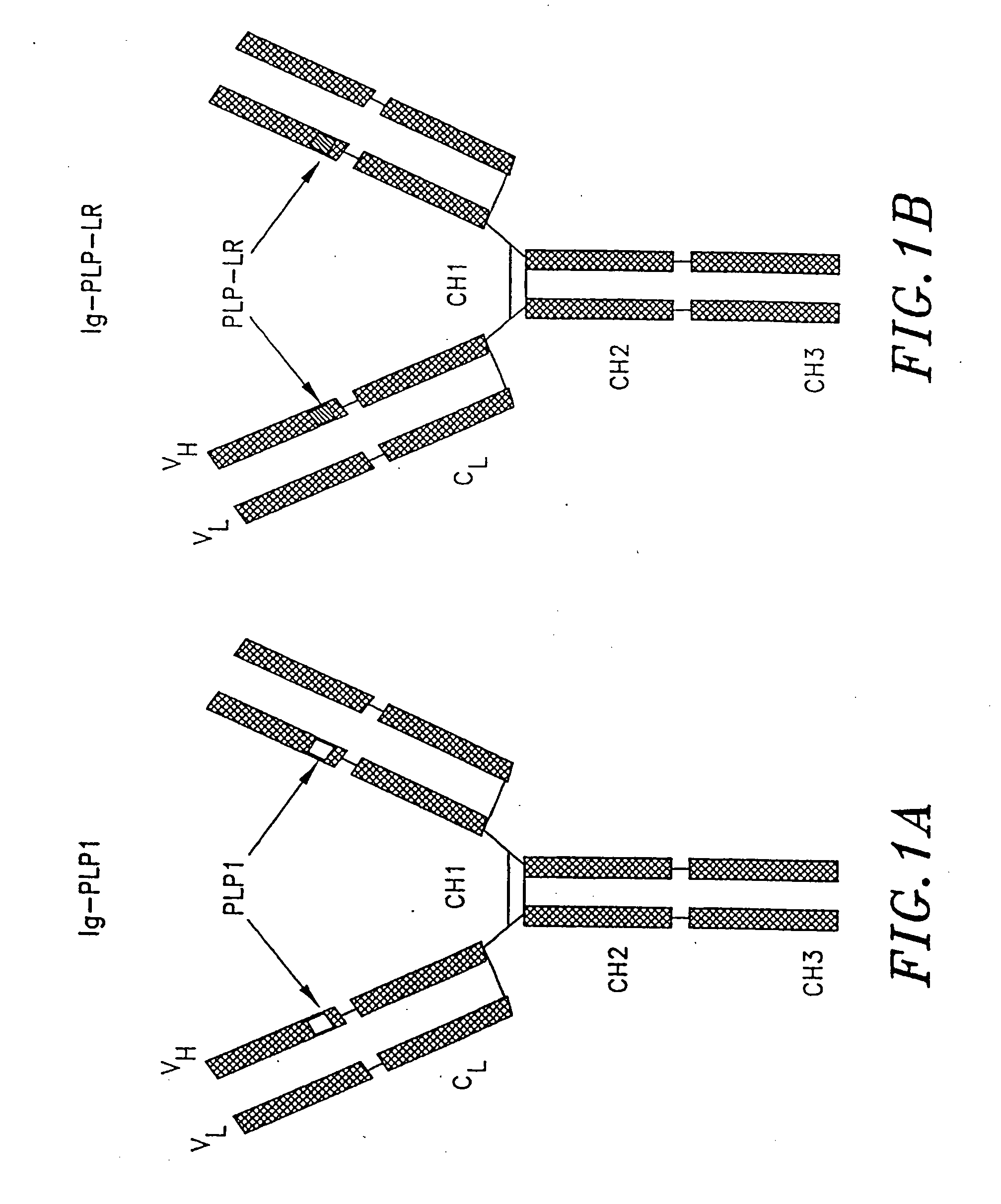Compounds, Compositions and Methods for the Endocytic Presentation of Immunosuppressive Factors
a technology of immunosuppressive factors and compositions, applied in the field of compound compositions and methods for the effective endocytic presentation of immunosuppressive factors, can solve the problems of murine mabs not being well suited for human therapeutic applications, illness or undesirable side effects, etc., to reduce the likelihood of tissue or organ rejection and induce tolerance to various autoantigens
- Summary
- Abstract
- Description
- Claims
- Application Information
AI Technical Summary
Benefits of technology
Problems solved by technology
Method used
Image
Examples
example i
Preparation of Peptides
[0113]For the purposes of this application the amino acids are referred to by their standard three-letter or one-letter code. Unless otherwise specified, the L-form of the amino acid is intended. When the 1-letter code is used, a capital letter denotes the L-form and a small letter denotes the D-form. The one letter code is as follows: A, alanine; C, cysteine; D, aspartic acid; E, glutamic acid; F, phenylalanine; G, glycine; H, histidine; I, isoleucine; K, lysine; L, leucine; M, methionine; N, asparagine; P, proline; Q, glutamine; R, arginine; S, serine; T, threonine; V, valine; W, tryptophan; and Y, tyrosine.
[0114]All peptides used in the following examples were produced by Research Genetic, Inc. (Huntsville, Ala.) using solid state methodology and purified on HPLC columns to >90% purity using conventional methods. PLP1 peptide (HSLGKWLGHPNKF: SEQ. ID No. 1) encompasses an encephalitogenic sequence corresponding to aa residues 139-151 of naturally occurring p...
example ii
Production of Murine Chimeric Immunoglobulins Comprising Exogenous Peptides
[0115]Two immunoglobulin-peptide chimeras, designated Ig-PLP1 and Ig-PLP-LR and shown schematically in FIG. 1, were constructed to express peptides PLP1 and PLP-LR as described in Example 1. In both cases, the heavy chain CDR 3 loop was deleted and replaced with nucleotide sequences coding for the selected peptide. Conventional DNA sequencing analysis indicated insertion of peptide nucleotide sequences in the correct reading frame.
[0116]The genes used to construct these chimeras include the gene coding for the BALBK IgG2b constant region as described by Gillian et al., Cell. 33:717, 1983, the gene coding for the 91A3 heavy chain variable region as described by Ruthban et al., J. Mol. Bio., 202:383-398, 1988, and the gene coding for the entire 91A3 kappa light chain as described by Gary et al., Proc. Natl. Acad. Sci., 84:1085-1089, 1987, all of which are incorporated herein by reference. The procedures for del...
example iii
Purification of Proteolipid Protein
[0120]Native proteolipid protein or PLP was purified from rat brain according to the previously described procedure of Lees et al., in Preparation of Proteolipids, Research Methods in Neurochemistry, N. Marks and R. Rodnight, editors. Plunemum Press, New York, 1978 which is incorporated herein by reference.
[0121]Briefly, brain tissue was homogenized in 2 / 1 v / v chloroform / methanol, and the soluble crude lipid extract was separated by filtration through a scintered glass funnel. PLP was then precipitated with acetone and the pellet was redissolved in a mixture of chloroform / methanol / acetic acid and passed through an LH-20-100 sephadex column (Sigma) to remove residual lipids. Removal of chloroform from the elutes and conversion of PLP into its apoprotein form were carried out simultaneously through gradual addition of water under a gentle stream of nitrogen. Subsequently, extensive dialysis against water was performed to remove residual acetic acid a...
PUM
| Property | Measurement | Unit |
|---|---|---|
| temperature | aaaaa | aaaaa |
| structure | aaaaa | aaaaa |
| shape | aaaaa | aaaaa |
Abstract
Description
Claims
Application Information
 Login to View More
Login to View More - R&D
- Intellectual Property
- Life Sciences
- Materials
- Tech Scout
- Unparalleled Data Quality
- Higher Quality Content
- 60% Fewer Hallucinations
Browse by: Latest US Patents, China's latest patents, Technical Efficacy Thesaurus, Application Domain, Technology Topic, Popular Technical Reports.
© 2025 PatSnap. All rights reserved.Legal|Privacy policy|Modern Slavery Act Transparency Statement|Sitemap|About US| Contact US: help@patsnap.com



